A sample of 2 kg monoatomic helium (assumed ideal ) is taken from A to C through the process ABC and another sample of 2 kg of the same gas is taken through the process ADC (seefig). Given molecular mass of helium = 4.
_E01_268_Q01.png)
(i) What is the temperature of helium in each of the states A,B,C and D?
(ii) Is there any way of telling afterwards which sample of helium went through the process ABC and which went through the process ADC? Write Yes and No.
How much is the heat involved in the process ABC and ADC?
The correct Answer is:3250
Number of gram moles of He
n=mM=2×1034=500
VA=10m3,PA=5×104N/m2
∴ TA=PAVAnR=(10)(5×104)(500)(8.31)K
or TA=120.34K
Similarly, VB=10m3,PB=10×104N/m2
∴ TB=(10)(10×104)(500)(8.31)K ∴ TB=240.68K
VC=20m3,PC=10×104N/m2 ∴ TC=(20)(10×104)(500)(8.31)K
TC=481.36K and VD=20m3,PD=5×104N/m2
∴ VD=(20)(5×104)(500)(8.31)K
TD=240.68K
Topper's Solved these Questions
- GASEOUS STATE & THERMODYNAMICSBOOK - VMC MODULES ENGLISHCHAPTER - GASEOUS STATE & THERMODYNAMICSEXERCISE - JEE MAIN (ARCHIVE )
81 Videos
- ENERGY & MOMENTUMBOOK - VMC MODULES ENGLISHCHAPTER - ENERGY & MOMENTUMEXERCISE - JEE ADVANCE (ARCHIVE) - TRUE/FALSE TYPE
1 Videos
- GRAVITATIONBOOK - VMC MODULES ENGLISHCHAPTER - GRAVITATIONEXERCISE - JEE Advance (Archive) TRUE/FALSE
1 Videos
Similar Questions
A sample of 2 kg of monatomic helium (assumed ideal) is taken through the process ABC another sample of 2 kg of the same gas is taken through the process ADC as shown in Fig. Given molecular mass of helium = 4.
a. What is the temperature of helium in each of the states A, B, C and D ?
b. Is there any way of telling afterwards which sample of helium went through the process ABC and which went through the process ADC ? Write yes or no.
How much is the heat involved in each of the process ABC and ADC ?
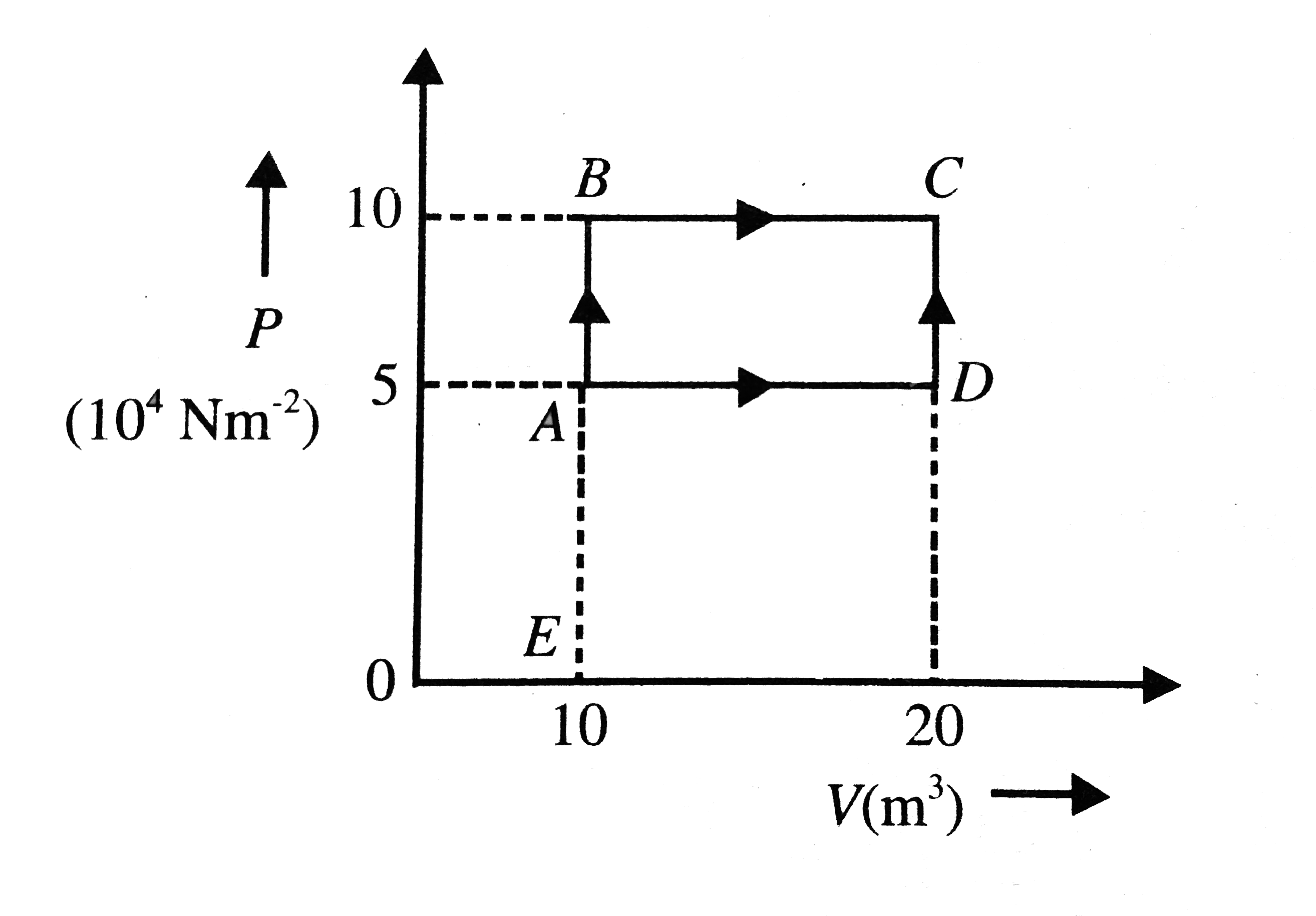
View SolutionA sample of 2kg monoatomic helium gas (assumed ideal) is taken through the process ABC and another samples of 2 kg of the same gas is taken through the process ADC. Given that the molecular mass of helium = 4 amu, find the temperature of helium in the state D. [Take the universal gas constant R=253Jmol−1K−1]
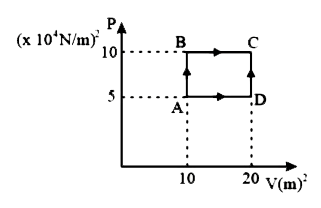
View SolutionA sample of 2kg of helium (assumed ideal) is taken through the process ABC and another sample of 2kg of the same gas is taken through the process ADC. Then the temperature of the states A and B are (given R=8.3Jmol−1K−1)
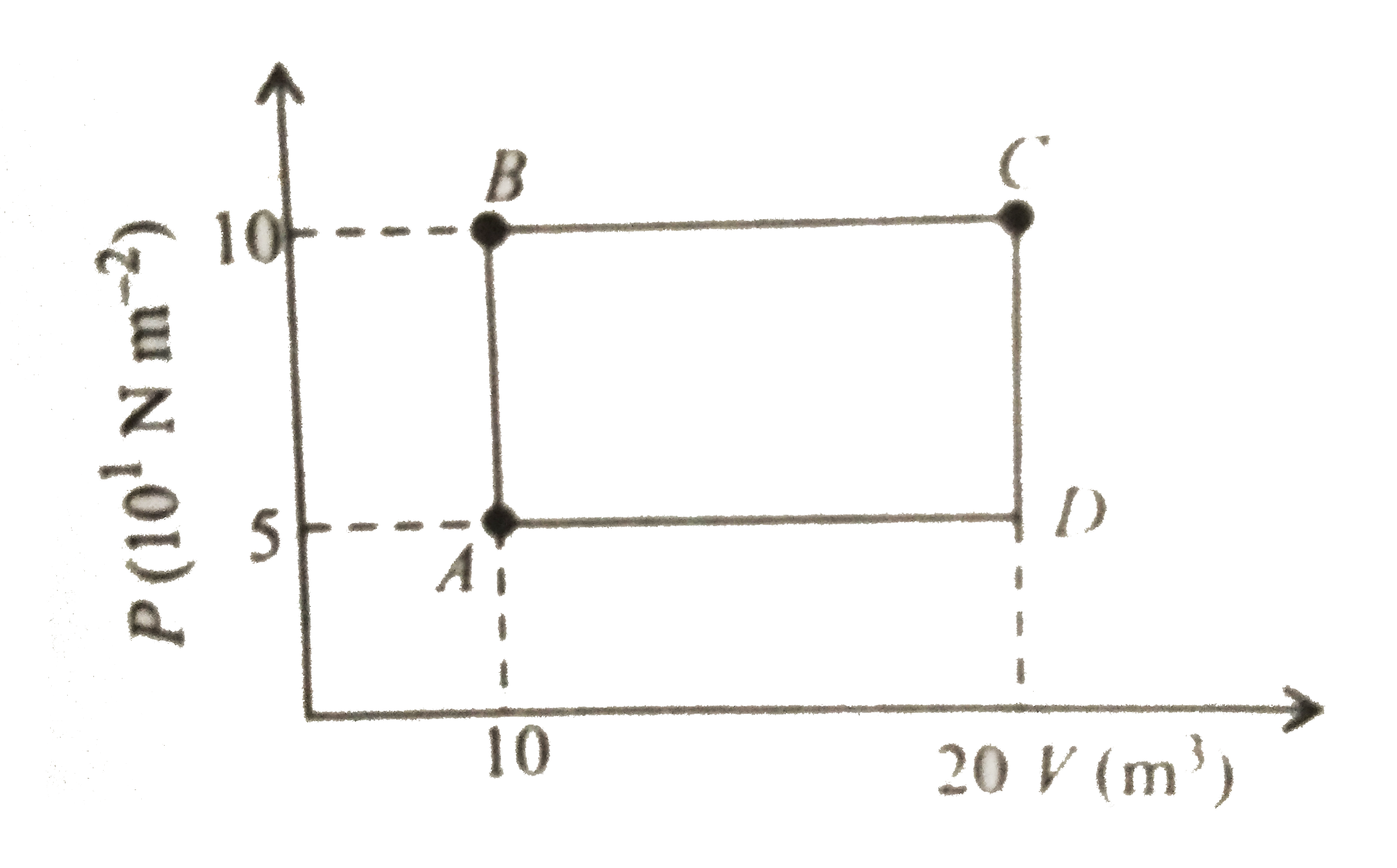
View SolutionIdeal gas is taken through the process shown in the figure :
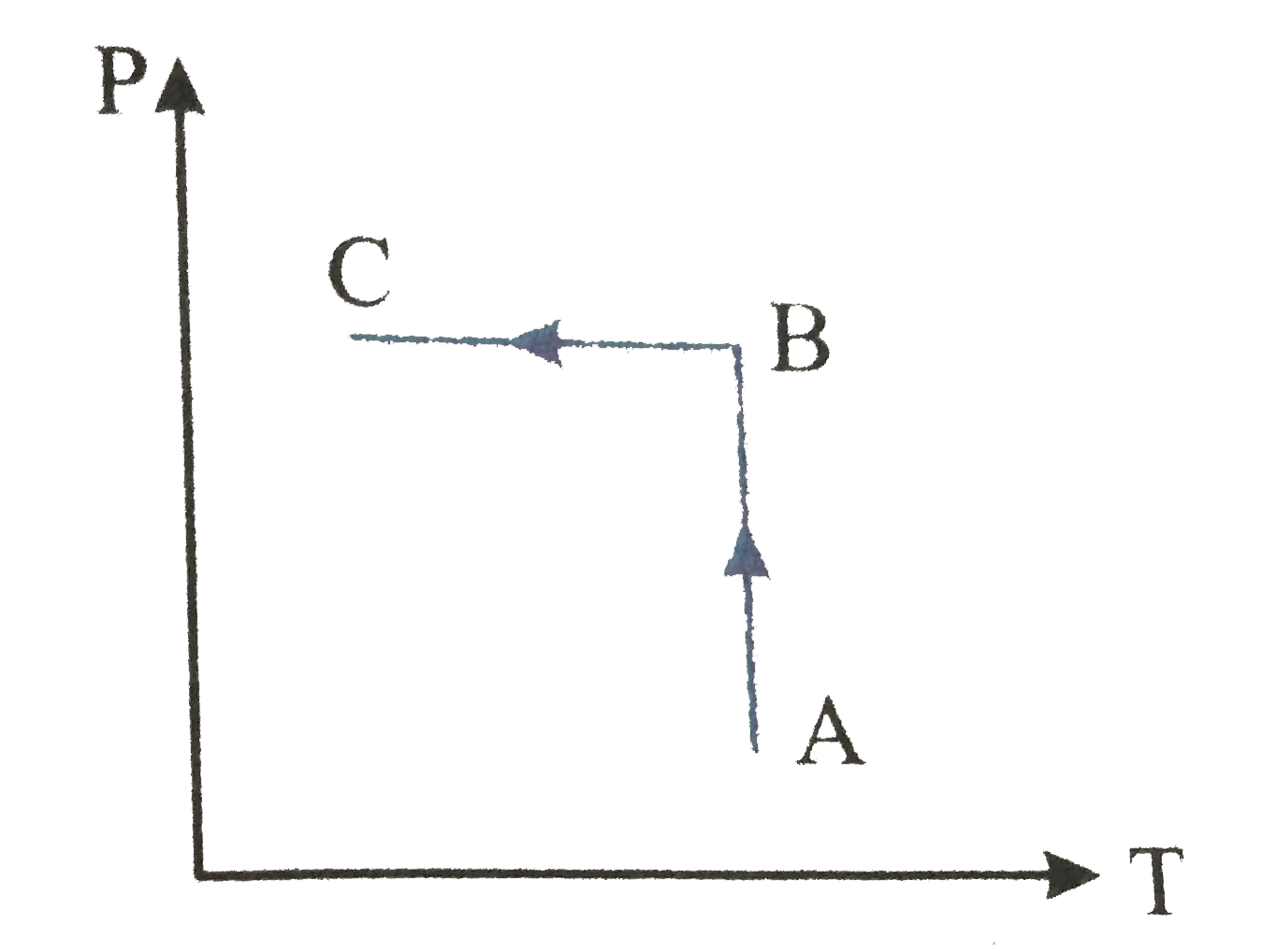
View SolutionIdeal gas is taken through the process shown in the figure :

View SolutionA sample of helium is undergoing a cyclic process ABCA as shown. In which of the following processes heat is a absorbed by the gas?
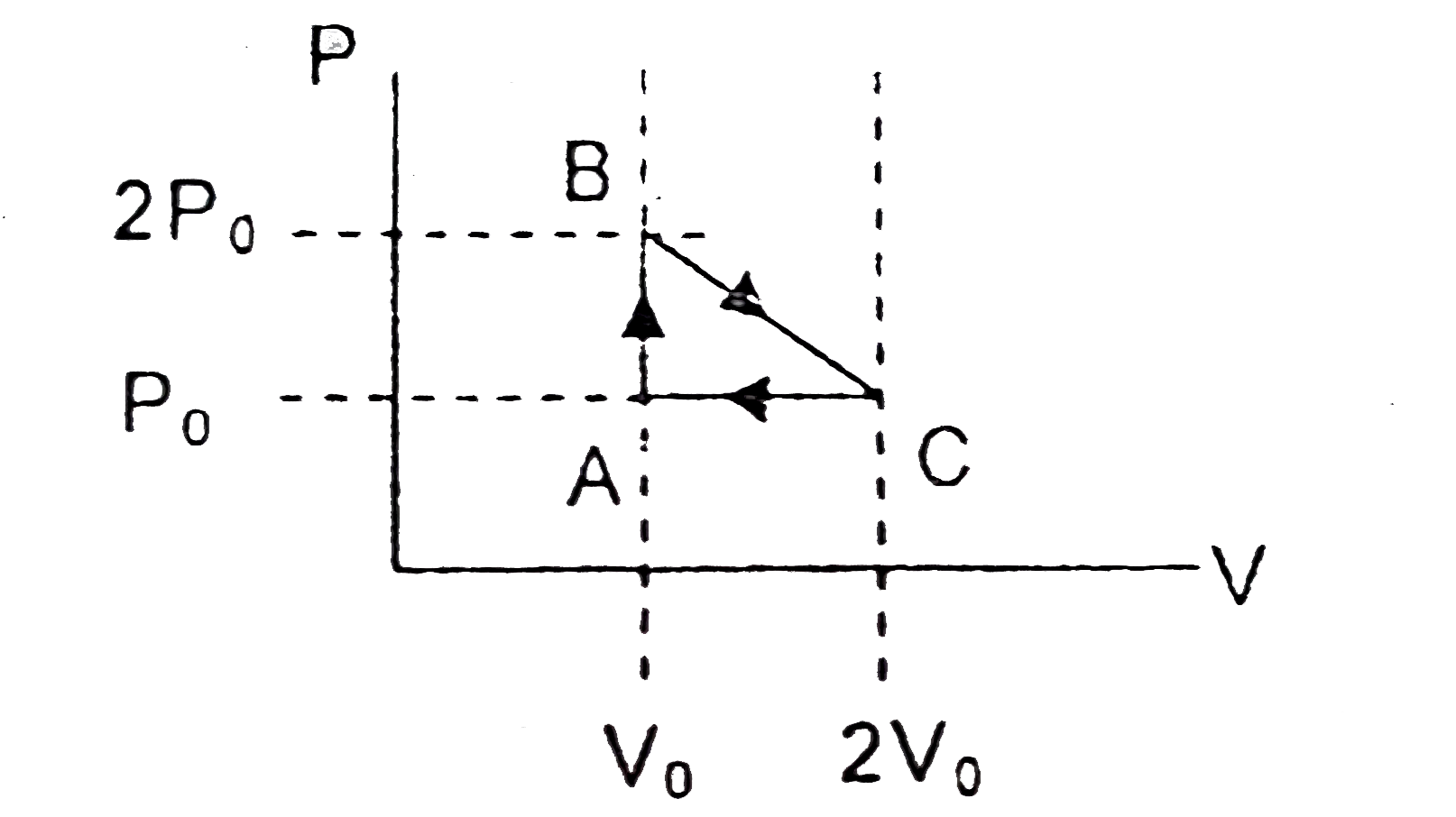
View SolutionA gas is taken through a cyclic process ABCA as shown in, if 2.4 cal of heat is given in the process, what is the value of J ?
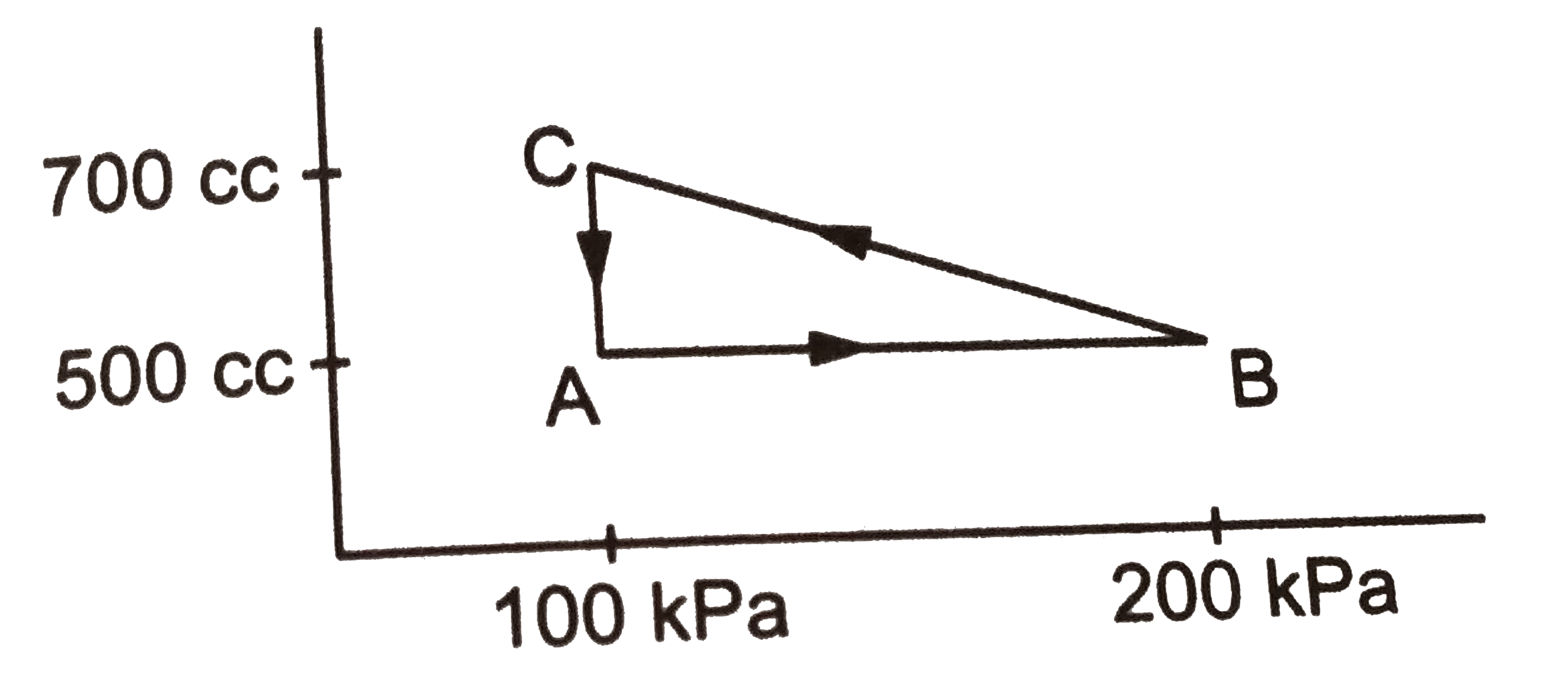
View SolutionA gas is taken through a cyclic process ABCA as shown in, if 2.4cal of heat is given in the process, what is the value of J ?

View SolutionOne mole of an ideal monoatomaic gas is taken from A to C along the path ABC . The temperature of the gas at A is T0 . For the process ABC :
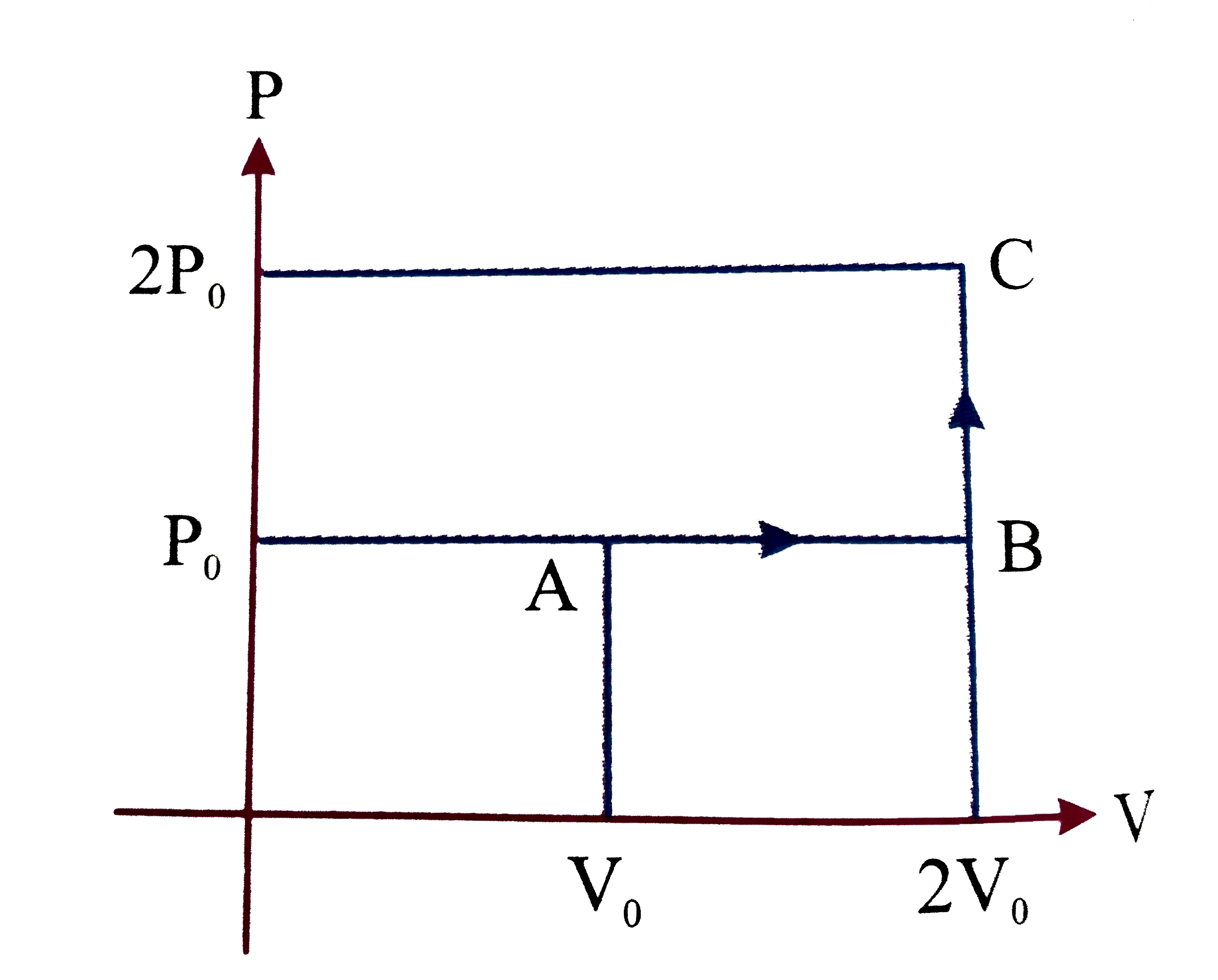
View SolutionA sample of ideal gas is taken through the cyclic process shown in the figure. The temerauture of the gas in state A is TA =200 K. In states B and C the temperature of the gas is the same.
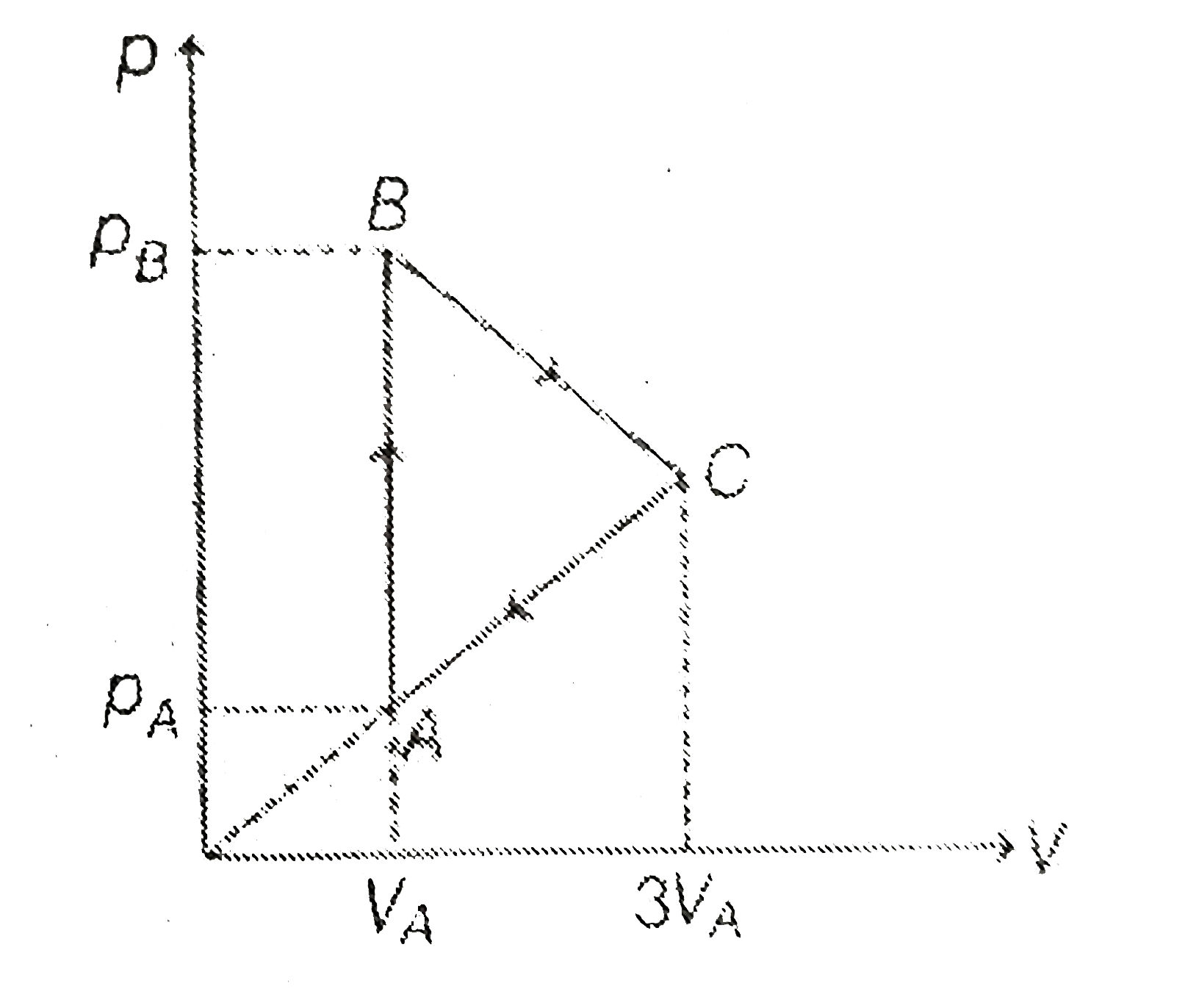
Net work done by the gas in the process is
View Solution
